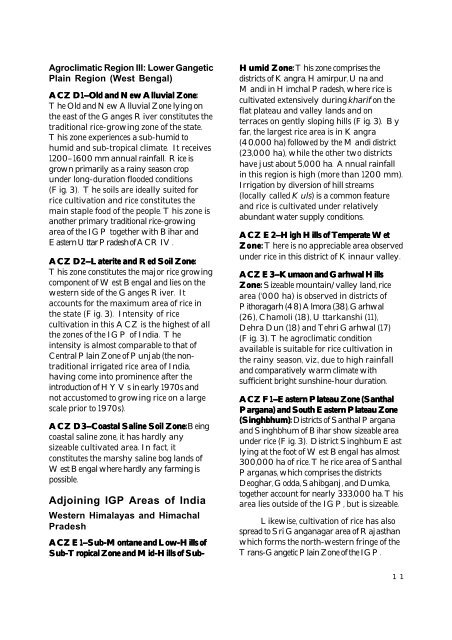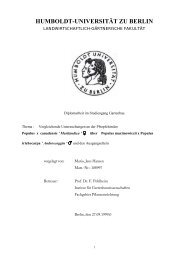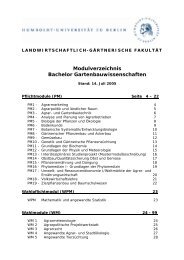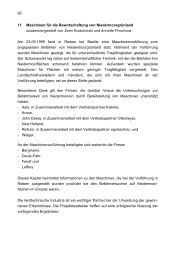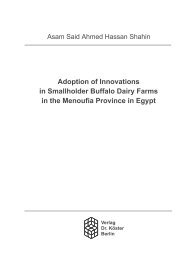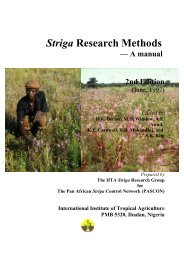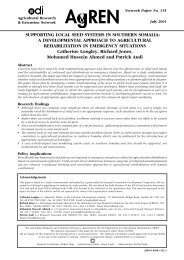Rice-Wheat Cropping Systems of the Indo-Gangetic Plain of India
Rice-Wheat Cropping Systems of the Indo-Gangetic Plain of India
Rice-Wheat Cropping Systems of the Indo-Gangetic Plain of India
Create successful ePaper yourself
Turn your PDF publications into a flip-book with our unique Google optimized e-Paper software.
Agroclimatic Region III: Lower <strong>Gangetic</strong><br />
<strong>Plain</strong> Region (West Bengal)<br />
ACZ D1—Old and New Alluvial Zone:<br />
The Old and New Alluvial Zone lying on<br />
<strong>the</strong> east <strong>of</strong> <strong>the</strong> Ganges River constitutes <strong>the</strong><br />
traditional rice-growing zone <strong>of</strong> <strong>the</strong> state.<br />
This zone experiences a sub-humid to<br />
humid and sub-tropical climate. It receives<br />
1200–1600 mm annual rainfall. <strong>Rice</strong> is<br />
grown primarily as a rainy season crop<br />
under long-duration flooded conditions<br />
(Fig. 3). The soils are ideally suited for<br />
rice cultivation and rice constitutes <strong>the</strong><br />
main staple food <strong>of</strong> <strong>the</strong> people. This zone is<br />
ano<strong>the</strong>r primary traditional rice-growing<br />
area <strong>of</strong> <strong>the</strong> IGP toge<strong>the</strong>r with Bihar and<br />
Eastern Uttar Pradesh <strong>of</strong> ACR IV.<br />
ACZ D2—Laterite and Red Soil Zone:<br />
This zone constitutes <strong>the</strong> major rice growing<br />
component <strong>of</strong> West Bengal and lies on <strong>the</strong><br />
western side <strong>of</strong> <strong>the</strong> Ganges River. It<br />
accounts for <strong>the</strong> maximum area <strong>of</strong> rice in<br />
<strong>the</strong> state (Fig. 3). Intensity <strong>of</strong> rice<br />
cultivation in this ACZ is <strong>the</strong> highest <strong>of</strong> all<br />
<strong>the</strong> zones <strong>of</strong> <strong>the</strong> IGP <strong>of</strong> <strong>India</strong>. The<br />
intensity is almost comparable to that <strong>of</strong><br />
Central <strong>Plain</strong> Zone <strong>of</strong> Punjab (<strong>the</strong> nontraditional<br />
irrigated rice area <strong>of</strong> <strong>India</strong>,<br />
having come into prominence after <strong>the</strong><br />
introduction <strong>of</strong> HYVs in early 1970s and<br />
not accustomed to growing rice on a large<br />
scale prior to 1970s).<br />
ACZ D3—Coastal D3 Coastal Saline Soil Zone: Being<br />
coastal saline zone, it has hardly any<br />
sizeable cultivated area. In fact, it<br />
constitutes <strong>the</strong> marshy saline bog lands <strong>of</strong><br />
West Bengal where hardly any farming is<br />
possible.<br />
Adjoining IGP Areas <strong>of</strong> <strong>India</strong><br />
Western Himalayas and Himachal<br />
Pradesh<br />
ACZ E1—Sub-Montane and Low-Hills <strong>of</strong><br />
Sub-Tropical Zone and Mid-Hills <strong>of</strong> Sub-<br />
Humid Zone: This zone comprises <strong>the</strong><br />
districts <strong>of</strong> Kangra, Hamirpur, Una and<br />
Mandi in Himchal Pradesh, where rice is<br />
cultivated extensively during kharif on <strong>the</strong><br />
flat plateau and valley lands and on<br />
terraces on gently sloping hills (Fig. 3). By<br />
far, <strong>the</strong> largest rice area is in Kangra<br />
(40,000 ha) followed by <strong>the</strong> Mandi district<br />
(23,000 ha), while <strong>the</strong> o<strong>the</strong>r two districts<br />
have just about 5,000 ha. Annual rainfall<br />
in this region is high (more than 1200 mm).<br />
Irrigation by diversion <strong>of</strong> hill streams<br />
(locally called Kuls) is a common feature<br />
and rice is cultivated under relatively<br />
abundant water supply conditions.<br />
ACZ E2—High E2 High Hills <strong>of</strong> Temperate Wet<br />
Zone: There is no appreciable area observed<br />
under rice in this district <strong>of</strong> Kinnaur valley.<br />
ACZ E3—Kumaon and Garhwal Hills<br />
Zone: Sizeable mountain/valley land, rice<br />
area (‘000 ha) is observed in districts <strong>of</strong><br />
Pithoragarh (48) Almora (38), Garhwal<br />
(26), Chamoli (18), Uttarkanshi (11),<br />
Dehra Dun (18) and Tehri Garhwal (17)<br />
(Fig. 3). The agroclimatic condition<br />
available is suitable for rice cultivation in<br />
<strong>the</strong> rainy season, viz., due to high rainfall<br />
and comparatively warm climate with<br />
sufficient bright sunshine-hour duration.<br />
ACZ F1—Eastern Plateau Zone (Santhal<br />
Pargana) and South Eastern Plateau Zone<br />
(Singhbhum): Districts <strong>of</strong> Santhal Pargana<br />
and Singhbhum <strong>of</strong> Bihar show sizeable area<br />
under rice (Fig. 3). District Singhbum East<br />
lying at <strong>the</strong> foot <strong>of</strong> West Bengal has almost<br />
300,000 ha <strong>of</strong> rice. The rice area <strong>of</strong> Santhal<br />
Parganas, which comprises <strong>the</strong> districts<br />
Deoghar, Godda, Sahibganj, and Dumka,<br />
toge<strong>the</strong>r account for nearly 333,000 ha. This<br />
area lies outside <strong>of</strong> <strong>the</strong> IGP, but is sizeable.<br />
Likewise, cultivation <strong>of</strong> rice has also<br />
spread to Sri Ganganagar area <strong>of</strong> Rajasthan<br />
which forms <strong>the</strong> north-western fringe <strong>of</strong> <strong>the</strong><br />
Trans-<strong>Gangetic</strong> <strong>Plain</strong> Zone <strong>of</strong> <strong>the</strong> IGP.<br />
11


